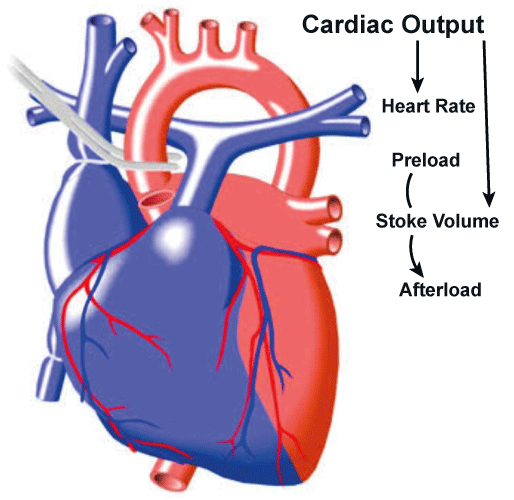
Live tutorial: Cardiac output (Physiology)
Try and answer these questions before the LT tutorial. You may not be able to answer all of them in full, but think about them on the basis of what you have learned so far.
-
Define cardiac output and what are the values at rest and during exercise? What determines stroke volume? (3)
★Cardiac output is the volume of blood pumped by the heart per unit of time, typically measured in liters per minute
★At rest, cardiac output is around 5 liters per minute and can increase to 20-25 liters per minute during intense exercise
★Stroke volume, the volume of blood pumped out of the heart with each contraction, determines cardiac output. Stroke volume is influenced by factors like preload, afterload, and contractility
-
Define Starling’s law. How does Starling’s law affect cardiac output? What is the importance of Starling’s law? (3)
★Starling's law states that the force of cardiac contraction (and thus stroke volume) is directly proportional to the initial length of the muscle fibers.
★Starling's law affects cardiac output by regulating stroke volume based on the end-diastolic volume of the heart.
It ensures that the heart pumps out as much blood as it receives, optimizing cardiac function.
-
What is the underlying molecular mechanism of Starling’s Law?
★The underlying molecular mechanism involves the length-tension relationship of cardiac muscle fibers. When the fibers are stretched (due to increased preload), it increases the sensitivity of myofilaments to calcium ions, leading to stronger contractions.
-
Define LaPlace’s law. What is the importance of LaPlace’s law in normal ejection, and also in heart failure? (3)

★LaPlace's law states that the tension in the walls of a sphere (like the heart) is directly proportional to the pressure inside the sphere and the radius of the sphere, and inversely proportional to the wall thickness
★In normal ejection, LaPlace's law ensures efficient pumping by balancing wall tension and myocardial oxygen demand
★In heart failure, increased wall tension due to dilation (increased radius) contributes to further myocardial damage and dysfunction
-
What is contractility/inotropy? How does the Ca2+ cycle in cardiac muscle cells explain changes in contractility? How does digoxin work? (4)
★Contractility, or inotropy, refers to the strength of cardiac muscle contraction
★The Ca2+ cycle in cardiac muscle cells regulates contractility ★Increased intracellular calcium levels enhance contractility by promoting actin-myosin interactions and thus stronger contractions
★Digoxin works by inhibiting the sodium-potassium ATPase pump, leading to increased intracellular calcium levels and enhanced contractility
-
How does stimulation of the sympathetic nervous system affect the heart? (2)
★Stimulation of the sympathetic nervous system increases heart rate, contractility, and conduction velocity
★It achieves this by releasing neurotransmitters like noradrenaline, which binds to beta-adrenergic receptors on cardiac cells, leading to intracellular signaling cascades that enhance cardiac function

